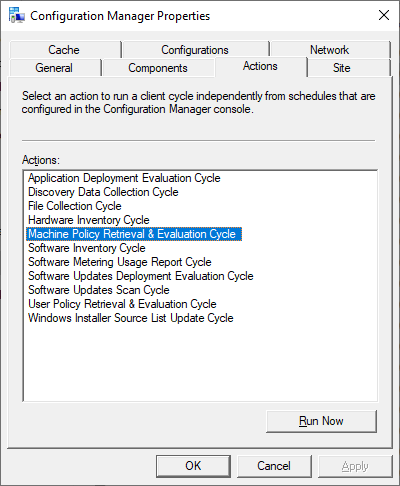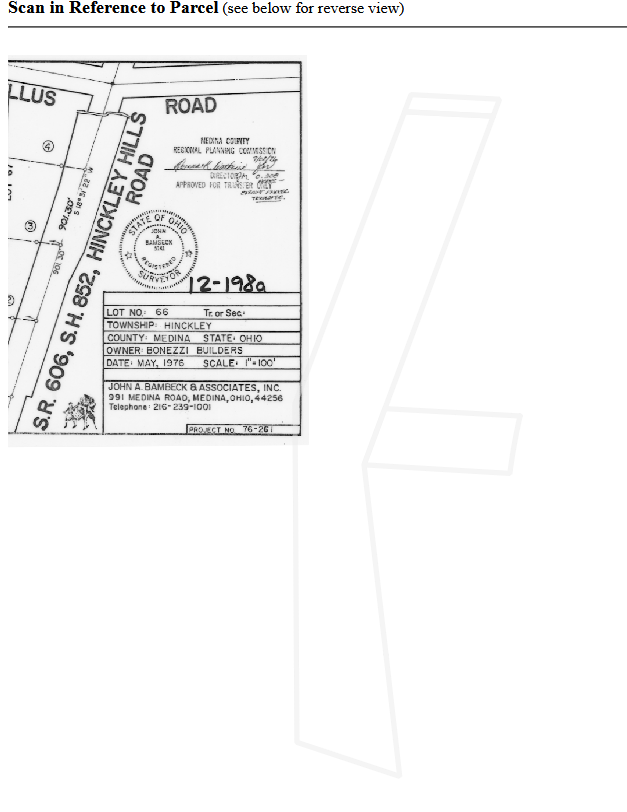There is a prospective buyer who has requested a variance to the township’s setback requirements in order to build his house on a neighboring property. The zoning requirements stipulate a 120′ front setback from the center-line of the private right-of-way (i.e. the park’s road) and a 50′ rear setback from our property. The original request cited a 90′ front setback based on a public right-of-way, but that is not correct. While the request states he wants to reduce the front setback by 40′ and the rear setback by 34′, I think the actual request on the front setback is 70′.
There are a few justifications provided for the setback request — that there are technical limitations that mandate the variance, that the elevation means the property won’t bother the neighbors, that the previous zoning would have allowed construction within these bounds, and neighboring properties have similar encroachments.
While we are not trying to create a hardship for the buyer, we were given notice of a public hearing and told it was the time to state our opinion. When we were shopping for a house, we specifically wanted to live in a rural environment. When I consider the use and enjoyment of one’s property, consideration is not limited to the structures erected on the property. We specifically wanted to purchase several acres of land with wooded areas because hiking in the woods is an enjoyable activity.
Hinckley’s Master Policy Plan highlights the community’s desire “to protect and promote the rural and natural character of the Township”. This is not a new initiative in Hinckley, the 2003 Master Policy Plan speaks to preserving “the existing rural character and image of the township”. Part of our house shopping process included reviewing zoning regulations — we wanted to maintain a large garden and possibly raise farm animals. And we didn’t want to learn after purchasing a home that we were legally precluded from using the property as we desired. One of the attractive things about Hinckley was the large minimum lot sizes and expansive setback requirements.
Technical Limitations — To me, a technical limitation of a lot would be where a combination of zoning regulations preclude building on the property. As an example, after accounting for setback requirements, the smaller non-conforming lots may not have enough buildable land to construct a home with the minimum floor area requirements with two off-street parking spaces. It may not be possible to build a compliant home on a two acre lot, once elevation and waterways are considered.
In this case, there is land available for the footprint of the structure. One of the things I would like to see during the site review is the dimension of the land deemed buildable. The fact a particular home design does not fit on a lot is not a technical limitation of the lot. It is reality. There are millions of other homes, of similar size and with similar features, which could be built on the lot and fully comply with the zoning regulations.
Elevation — While the structure in question may be 30+ feet in elevation over the park’s road, carpark, and hiking trail, it is not 30′ in elevation over the woods where we hike.
Non-conforming Lot Setbacks — Section 4.1.G stipulates minimum side and rear yard depths for R1 and R2 District lots covered in the “Substandard Lot Provisions”. Section 6R1.4.K lists three sub-standard lot minimum lot areas: 32,670 sq ft (0.75 acre); 66,000 sq ft (~1.52 acres); 65,340 sq ft (1.5 acres). The lots, as previously platted, were each under 0.75 acres. Survey Book 39, page 212 contained the “current” platting prior to the lots being combined. Lot A is 0.4947 acres, lot B 0.4707 acres, lot C 0.4780 acres, and lot D 0.4960 acres. As such, it was my understanding that anyone who desired to build on one of the lots would require a variance due to the lot size — which would allow us the opportunity to review and comment on the proposed structure.
Additionally, the fact that a structure could have been build with a fifteen foot rear setback on each of the previously existing lots is a specious argument. This isn’t a non-conforming lot. The property owner voluntarily combined the four sub-standard lots into one standard lot. This included adding formerly unowned property under Bellus Road. If the desire was to build within the allowable parameters of a sub-standard lot, then the lots should have remained sub-standard.
Setback of Other Neighboring Properties — The closeness of neighboring properties was one of the few negative points about our property — walking around the kitchen patio feels walking in the neighbor’s back yard. Walking from our back yard along the South side of the property feels like walking in the neighbor’s side yard.
The other houses in the neighborhood are well over fifteen feet from their rear property lines. These measurements (1) assume decks, patios, and above-ground pools are not used in determining setback distances and (2) estimates based on the aerials from the Medina County Engineer’s GIS system. About 20′ of our house is about 25′ from the property line. Because the Medina County Engineer’s GIS system has the aerial OSIP (Ohio Statewide Imagery Program) tiles and parcel lines misaligned, the house appeared to be about 45′ from the property line. It wasn’t until we’d lived here for a year or two that Scott and a friend searched out the property pins and we realized the line was really close to the house.
Z’s garage is about 40′ from the property line. Greg and Erica’s house is over 50′ from the rear property line with an accessory building very close to the property line. Larry’s house is over 50′ from the rear property line, although the rear deck and pool and accessory building are quite close to the property line. Mark and Rae’s is over 50′. Cynthia’s house is well over 50′, but there is an accessory building situated near the property line. Side lot setbacks are certainly not in compliance with zoning standards for two acre lots, but all of these lots are well under two acres
But, of the six houses in the neighborhood, half were built more than 50 years ago. Two of the remaining three were built 30 years ago, and the newest house was built 20 years ago. I do not know what the zoning regulations contained decades ago (i.e. these may well have been compliant at the time), and the older houses may well predate zoning regulations. Even if the zoning regulations were exactly the same at the time, we didn’t participate in the variance discussion because we didn’t live here. For half of the properties, we weren’t even born.
| Owner |
Street Number |
Year Built |
Years Ago |
| Z |
1830 West Dr |
2000 |
20 |
| Greg & Erika |
1850 West Dr |
1953 |
67 |
| Larry |
1860 West Dr |
1990 |
30 |
| Mark & Rae |
1870 West Dr |
1961 |
59 |
| Cynthia |
1886 West Dr |
1940 |
80 |
| Scott & Lisa |
1006 Bellus Rd |
1990 |
30 |
Something’s existence does not make more of it desirable. There is traffic on Bellus Rd, but having Center Rd rerouted to our street while the bridge was under construction was disruptive.
The variance process is not a common-law system — a variance being issued in once circumstance does not set a precedent that requires similar variances be issued.






